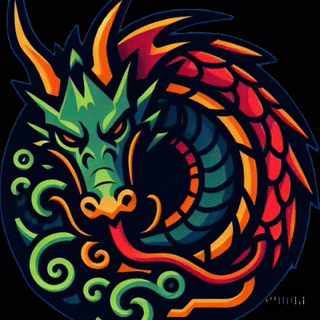The Hierarchy of Buddhist Gods:
A Comprehensive Overview
Introduction
Buddhism, a spiritual tradition that originated in India over 2,500 years ago, is often seen as a philosophy rather than a theistic religion. However, Buddhist cosmology features a complex hierarchy of divine beings, deities, and celestial figures. These entities, while not creators in the monotheistic sense, play significant roles in the Buddhist understanding of the universe, karma, and enlightenment. This paper explores the hierarchy of Buddhist gods across different traditions, providing scholarly references and resources for further study.
The Structure of the Buddhist Cosmos
Buddhism presents a multi-layered cosmos known as the Trailokya or the "Three Realms" (Sanskrit: triloka):
Kāmadhātu (Desire Realm) – The realm of sensory desire, where humans, animals, and lower deities exist.
Rūpadhātu (Form Realm) – The realm of pure form, inhabited by higher deities who have transcended base desires.
Ārūpyadhātu (Formless Realm) – The highest realm, where beings exist in a state of pure consciousness, beyond material form.
Within these realms are numerous divine beings, often interpreted differently across Theravāda, Mahāyāna, and Vajrayāna Buddhism.
Major Deities in Buddhist Cosmology
1. Brahmās (High Celestial Beings)
Brahmās reside in the Rūpadhātu and are seen as highly advanced spiritual entities who have accumulated vast merit in past lives. They include:
Mahābrahmā: Considered the ruler of the Brahmā realm, often mistakenly worshipped as a creator god in some traditions.
Sahampati Brahmā: A celestial being who encouraged the Buddha to teach after his enlightenment.
2. Devas (Gods of the Sensory Realm)
Devas exist in various heavens within the Kāmadhātu, enjoying great pleasure but still bound to the cycle of rebirth. Prominent examples include:
Śakra (Indra): The king of the Trāyastriṃśa Heaven, often seen as a guardian of Buddhism.
Māra: The god of desire and death, who attempted to distract the Buddha from attaining enlightenment.
3. Bodhisattvas (Enlightened Beings)
In Mahāyāna and Vajrayāna Buddhism, bodhisattvas hold divine-like status, vowing to aid all beings in achieving enlightenment. Key figures include:
Avalokiteśvara (Guanyin, Chenrezig): The bodhisattva of compassion, widely venerated in East Asia.
Manjushri: The bodhisattva of wisdom, associated with insight and clarity.
Kṣitigarbha: A protector of beings in hell, vowing to save all until the hells are empty.
4. Dharma Protectors (Wrathful Deities)
Vajrayāna Buddhism introduces powerful deities who act as protectors of the Dharma. These figures are often fierce in appearance but are seen as compassionate enforcers of Buddhist teachings.
Mahākāla: A formidable protector deity worshipped in Tibetan Buddhism.
Palden Lhamo: The guardian goddess of Tibet, associated with the Dalai Lamas.
5. Yidams and Dakinis (Meditational Deities and Sky Dancers)
In Tantric Buddhism, yidams serve as personal meditation deities, while dakinis are female celestial beings associated with wisdom and transformation.
Vajrayogini: A prominent dakini representing ultimate wisdom.
Hevajra: A wrathful yidam deity aiding in transformation through esoteric practice.
Comparative Perspectives Across Buddhist Traditions
Theravāda Buddhism: Recognizes deities like Brahmās and devas but emphasizes their impermanence and subservience to the law of karma.
Mahāyāna Buddhism: Expands the pantheon with bodhisattvas, viewing them as active saviors guiding beings toward enlightenment.
Vajrayāna Buddhism: Incorporates a vast array of wrathful and meditational deities, using complex rituals and visualizations.
Further Research and Scholarly References
For those interested in further exploration, the following sources provide valuable insights:
Gethin, Rupert. The Foundations of Buddhism. Oxford University Press, 1998. Link
Williams, Paul. Mahayana Buddhism: The Doctrinal Foundations. Routledge, 2009. Link
Snellgrove, David. Indo-Tibetan Buddhism: Indian Buddhists & Their Tibetan Successors. Shambhala Publications, 2003. Link
The Buddhist Digital Resource Center: https://www.bdrc.io
Access to Insight (Theravāda texts and commentary): https://www.accesstoinsight.org
Conclusion
The hierarchy of Buddhist gods is a diverse and intricate system that reflects Buddhism’s philosophical and cultural evolution. From celestial Brahmās and devas to compassionate bodhisattvas and wrathful protectors, these beings serve as both metaphors for spiritual states and actual figures in Buddhist devotional practices. Understanding their roles deepens one’s appreciation of Buddhist traditions and their approach to divinity and enlightenment.
For continued research, consulting primary texts like the Pali Canon, Lotus Sutra, and Tibetan Book of the Dead will provide direct insights into the rich spiritual hierarchy of Buddhism.
480-366-3550 (Domain Sales)
© SDBEST LLC, 2025. All rights reserved.
Sponsorship Disclosure
Terms of Service
